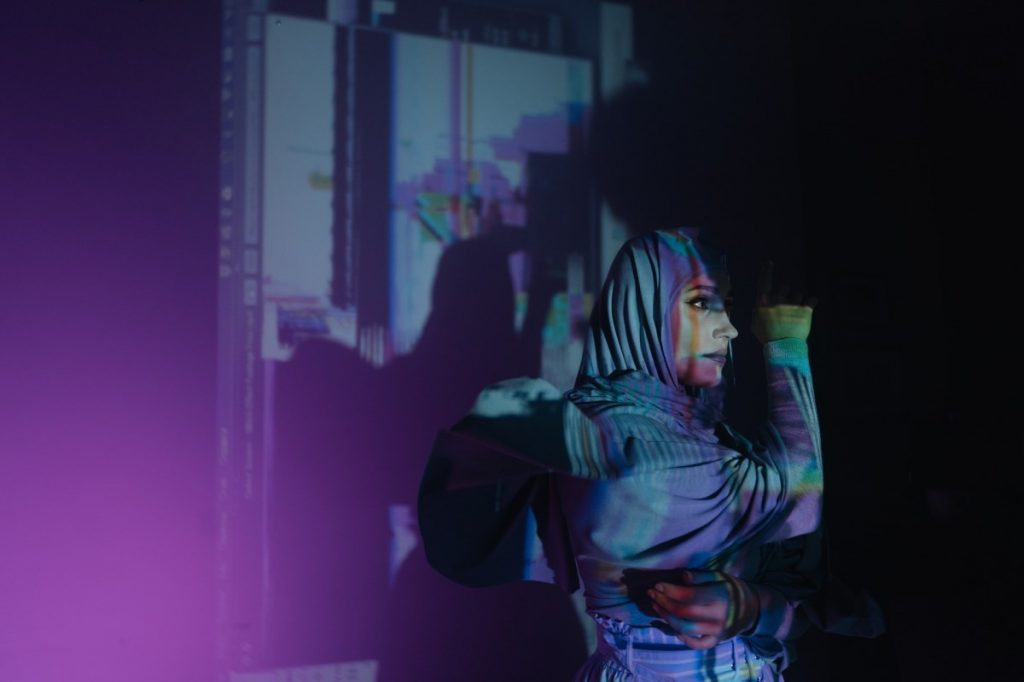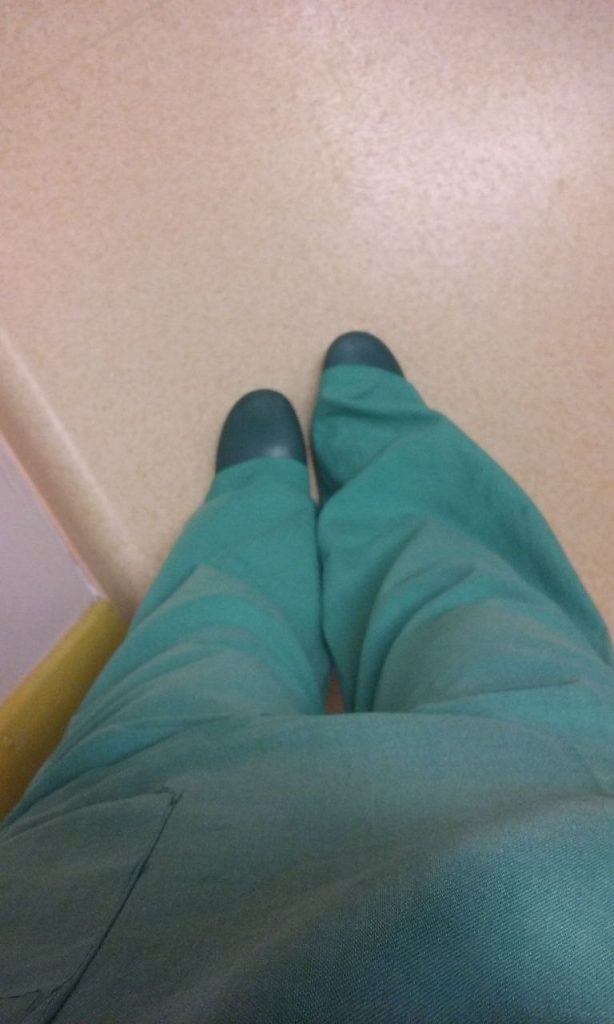Top image: Photo by Edmond Dantès from Pexels
“In full knowledge of the obligations I am undertaking, I promise to provide a competent standard of care for the sick regardless of race, religion, and status, sparing no effort to alleviate suffering and promote health and to refrain from any action which might endanger life.”
That is the oath nurses—or more recently dubbed “healthcare heroes”—take on Nurses Day. With their right hand raised mid-air, our nurses remind us of their inherent desire to protect people’s lives, that is, if their daily battle with the current levels of rising cases isn’t testament enough.
Once a year, on August 1, nurses recite this pledge to commemorate a time that is uncannily similar to our present, a day in which the strain on hospital facilities finally compelled a group of French nuns to join the General Hospital at the Sepoy Lines in 1885.
ADVERTISEMENT
Today, amidst the buzz of growing concerns about healthcare deficiencies and shortage of professionals, we are reminded of yet another historical milestone in Singapore’s healthcare sector that will be implemented on November 1, 2021.
Cautiously supportive of a ‘new normal’
Not long after celebrating both Nurses Day and our nation’s birthday, Prime Minister Lee Hsien Loong announced on August 29 that Muslim healthcare professionals can now don the hijab come November.
Although the general sentiment—especially within the Muslim community—has been of rejoicing, there are a group of individuals who lean towards being cautiously supportive.
“When I first heard the news, I was like ‘oh wow, this is definitely a big change for Singapore’. It felt like a good thing, but I did have some concerns,” said Tasha.
Tasha* is a 22-year-old enrolled nurse in one of Singapore’s government hospitals. She has been in this profession for three years since graduating from ITE. Tasha works in an operating theatre and is hesitant about this decision due to the nature of her work.
“Cross-contamination happens when, say, we do a diaper changing—the faeces may touch our inner [for the hijab], and we have to immediately change out because it poses a health risk to ourselves and our patients.”

Conventionally, nurses would bring a change of clothes or pack one in their lockers for such occasions, but Tasha wonders if this is feasible.
“Sometimes we forget, and that may become a problem. Normally, we could borrow uniforms from our colleagues, but in this case, they might not be Muslim, you see. So they may not have the kind of uniform we need (with the hijab and all).”
Sakina*, on the other hand, doesn’t see this as a problem.
As a 23-year-old hijabi, she has always been involved in the healthcare industry, despite currently pursuing a degree in biological sciences at a local university. Since her days studying biomedical science in polytechnic, she has taken on various part-time jobs as well as internships in healthcare, working in both the public and private sectors. Some of her previous roles include being a medical technician, clinical assistant, and medical records assistant.
“I wanted to be directly involved in caring for the patients in healthcare. But after the door to medical school and becoming a doctor closed, I couldn’t consider joining the nursing profession because of the uniform issues.”
Based on her experiences, she feels that necessary precautions can be taken to ensure the hijab does not interfere with the work that nurses do.
ADVERTISEMENT
“If it is part of a uniform, there should be certain guidelines to adhere to like tucking it in or rolling up your sleeves when handling patients. I understand the concerns, but I feel like there are always ways to avoid such complications.”
And Sakina was right. Recently, MUIS has announced its fatwa on the issue, in support of MOH’s ‘Bare Below Elbow’ policy, allowing the lower half of Muslim nurses’ arms to be uncovered so as to abide by safety precautions. The hijab may also be replaced with surgical caps and other forms of head coverings, depending on the nature of the nurses’ work.
But Tasha also raises another concern that hijabi nurses may have to grapple with.
“Some of our patients are quite aggressive, and they respond to us aggressively. Even when I’m not wearing my hijab when handling these patients, they already tend to pull my hair. What more if I wear my hijab?”
In such unsafe conditions, the ministry has clarified that wearing the hijab may not be allowed.

Heated histories to shifting sentiments on the ‘hijab’
The humble headscarf has been a divisive and sensitive topic in our local political discourse, with origins tracing back to a 2002 controversy over 4 Muslim girls who wore their headscarves to school. Since then, the issue of where this garment belonged and its suitability in the public sector has become a hot topic for debate.
While the controversy took place during a tumultuous period for Muslims worldwide—just shy of a year post-9/11—much has changed surrounding the tudung since then.
For one, the terminology has evolved with Western mainstream pop culture popularizing the term “hijabi” and “hijab” in the past decade.
Locally, PM Lee acknowledges how non-Muslims have grown accustomed to seeing Muslim women wearing the hijab. Likewise, these women are also at ease in their social interactions with their fellow Singaporeans.
So it seems that the evolving language is merely symptomatic of an increasing shift in perceptions towards the headscarf, where local and global society has come to normalise what is essentially an individual’s choice of clothing.
“I feel like the younger generation is a lot more accepting now,” notes Sakina. “People who are speaking up about Muslim women’s rights to wear their hijab are not just Muslim women themselves. That was probably one of the big deciding factors for policymakers in this decision as they witnessed the shifting public sentiments.”
Many were welcoming and celebrating the news during the rally, but a handful took to social media to express their discontent.
With comments like the above lurking in the comments section of The Straits Times and CNA Facebook posts, our alarm bells may start to go off. After all, these remarks don’t look like a welcome and inclusive banner for the new policy, and Muslim nurses may have every right to feel concerned for their safety.
Tasha was disappointed to see the backlash. “Maybe some of them are genuinely concerned and were trying to explain how it may feel stuffy and all to wear the hijab as a uniform. But it didn’t come across very well.”
With base comparisons to terrorist groups and stereotypes based on one incident of misappropriating funds, this cesspool of comments sounds far from the empathetic sentiments they attempt to guise as.
“The least you could do is respect us. Respect the decision that was made and try to understand the situation,” says Tasha. She points out the possibility that these remarks come from a lack of knowledge about the importance of the hijab to a Muslim woman.
Anisah Kader from Beyond The Hijab delves into how “the hijab is not only a religious practice but that it stands for modesty, respect, and that it is a personal journey the female Muslim chooses to go on.”
For Sakina, it is an integral part of her identity as a Muslim, especially in her connection to God.
Although she was always sceptical about joining nursing due to the uniform constraints, she first realised how devastating removing the hijab for work felt like when she did a month-long internship shadowing a gynaecologist when she was 18. When graced with the opportunity to observe him in the operating theatre, she bought everything from a new hijab to a clean shirt because she knew it had to be a sterile environment.
Unfortunately, she wasn’t allowed to use any of it.
“That experience made me emotional. I almost cried when I realised that I couldn’t use my hijab and that I had no way to cover myself up. Especially because the scrubs are short-sleeved and the neckline is so low. I just felt so exposed, and I was very uncomfortable in my own skin.”
That was the shifting point for Sakina to finally bid goodbye to the frontlines of healthcare despite her relentless passion for it. She knew, deep down, her beliefs were far too important to compromise for a career.

A spectrum of decisions on the hijab
On the flip side, many Muslim women continued to pursue nursing despite these hurdles in attire. Amongst such ladies is a spectrum ranging from healthcare professionals who have not yet donned the hijab at all to those who only do so outside of work.
Tasha falls in the latter category, as do many of her colleagues, all of whom now face an impending decision.
“An older colleague told me how she wouldn’t wear the hijab at work even if it were allowed now.”
Her colleagues have been working in this profession for years and have grown accustomed to not wearing their hijabs at work—they feel more comfortable and at ease at work without it. For Tasha, her concern is still primarily with handling sterile equipment and items.
“I can’t be adjusting my uniform when I handle these things,” Tasha explained. “I know sometimes we hijabis like to touch our hijab and adjust here and there. But we can’t do that in such circumstances.”
“We also have to wear N-95 masks work these days. So we’d wear it on top of the hijab if we choose to do so. And I’m not saying this as an excuse, but what if we get a heat stroke or something, right? In my hospital, we turn off the air conditioning as well because we don’t want to worsen the COVID-19 spread, so it might get uncomfortable fast.”
Given the backlash that erupted from the news, Sakina also recognises the social concerns for nurses that may deter them from wearing the hijab once the policy rolls out.
“They may be afraid of being perceived differently. Without the hijab, patients may already be prejudiced against nurses of a different colour, a different race. But it may remain ambiguous as to which race. With the hijab, there’s a clear demarcation of being a Muslim, and with that, a fear that patients may refuse treatment.”
However, Sakina acknowledges how the policy is more advantageous to those who are newly entering the industry. For instance, she knows it would be easier for her to transition into wearing the hijab if she were to join the healthcare sector now.
The right to choose to wear the hijab
“The new policy is more than just a new uniform. We recite our national pledge, ‘regardless of race, language or religion’ in school, and this policy change reminds us of that—that we appreciate and welcome our nurses regardless of race, language or religion. It’s a sign of solidarity to Muslim nurses, to embrace them not just for their work, but for who they are,” affirms Tasha.
Sakina also echoes these sentiments: “At least now, we have the right to choose whether we want to wear it at our workplace or not.”
Tasha also adds how this new regulation may be welcomed by the nurses who are going to great lengths to try to retain as much of their modesty as possible.
“Right now, from what I see on my way to work, there are healthcare professionals who wear their uniform, but they will also wear a jacket and tudung when they are commuting to and from work, even in the hot weather.”
Yet, Tasha is still uncertain if she will immediately jump on this opportunity to don the hijab at work. She is still relatively new to wearing the hijab—after only two years. Nevertheless, she is still grateful for this option to do so, especially on behalf of the Muslim healthcare professionals whose once-upon-a-time dream will soon become a reality.

Long-overdue options
Things are a little more complicated for Sakina, who has already chosen to pursue a degree in biological sciences.
I asked Sakina if she felt any sort of regret now, after hearing the news and if she would consider going back to nursing.
“I am in my final year, and there’s nothing much I can do about the time lost. It might not be time lost entirely because I have spent my time in university fruitfully, but, in a sense, it’s time I could have spent elsewhere, especially if nursing then was a possibbility.”
She accepts that it is not the most lucrative or practical option for her to go back to nursing now, no matter how meaningful the work may be.
Ultimately, it was a bittersweet moment for Sakina when the news first broke regarding this changing policy.
“There was some sense of envy because I knew it favoured those who are entering the field now. They can make this choice, and I’m happy that they have this choice. But it was also something me and a lot of my hijabi friends who were interested in healthcare didn’t have back then.”
“Not just a matter for Muslims”
The Prime Minister’s declaration of the tudung as “a national issue” inadvertently transformed the headscarf into an issue that transcended the Muslim community, giving it the level of awareness it now has in public discourse.
But perhaps it may also bring a sense of unwanted attention to a relatively personal decision.
It seems easier to discuss these things when we’re on the outside looking in. It’s easier to have debates and discussions determining people’s lives when we’re not the person being discussed. But it may be harder for us to empathise precisely because we aren’t in their shoes.
Contrarily, Sakina concedes that it is difficult to untangle ourselves from politics in the world we live in today.
“From the way the world perceives Muslims to how the media portrays us, there’s no way to separate my identity and politics. And it’s something I’m not happy or comfortable acknowledging because my hijab should be about my relationship with God. But I also understand that we live with people,” she wryly jokes.
“We live in a society where we are all different. So I can’t be completely selfish about certain aspects of my identity.”
Sakina’s words ring true in light of the tremendous historical and sociopolitical weight resting in the threads of a thin sliver of cloth wrapped around the head of a Muslim woman. These threads may feel like it’s made of lead, but they are essential in weaving the tapestry of our country—a tapestry that might better resemble our national aspiration towards racial harmony.
“People will always look at you for being different,” notes Sakina. “And as long as differences persist, there’s always going to be something political about it. But at least we are having these difficult conversations and hearing contradicting opinions. At least, eventually, we get to see things from a different lens.”


 (@wakeupsingapore)
(@wakeupsingapore)




